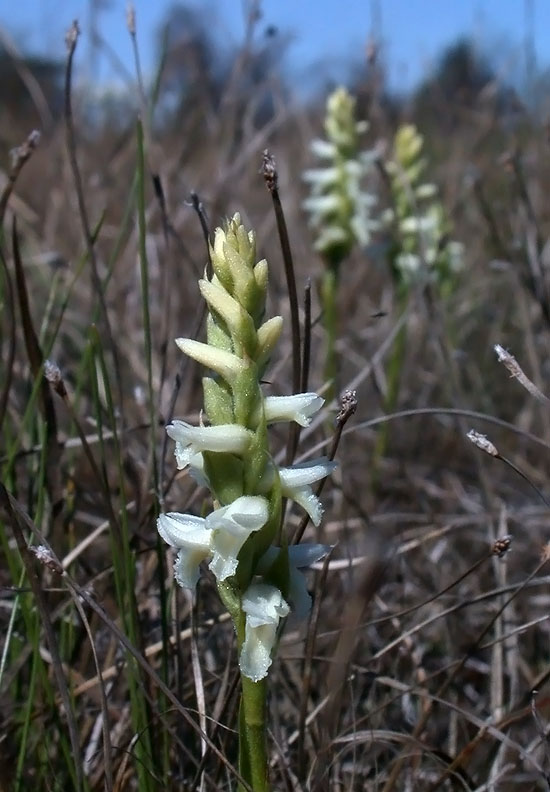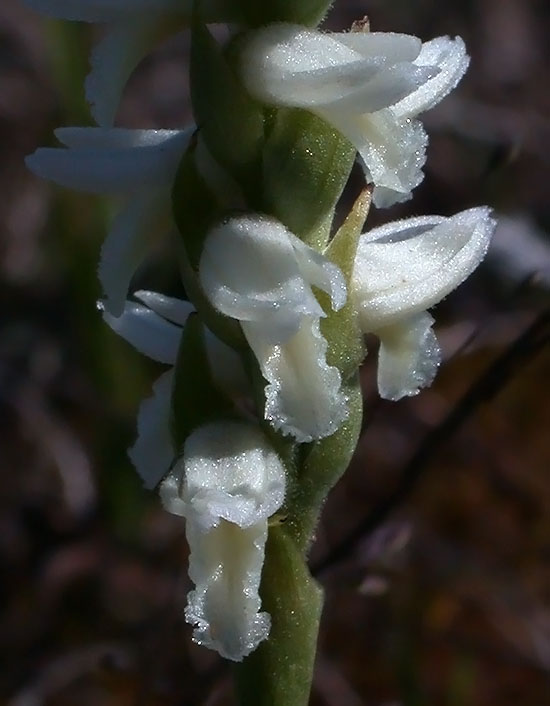Great Plains Ladies-tresses (Spiranthes magnicamporum) was first identified in New York at an alvar preserve in Jefferson County by Dan Brunton in 2014 (see Winter 2015 NY Flora Association Newsletter). Not long after another distinct population was located within the same preserve in Jefferson County and two other populations in St. Lawrence County. It is likely that this species had been overlooked in the past because of its similarity to S. cernua, though it is also likely restricted to a few locations in northern NY.
With this in mind I asked Don Leopold if he had seen this species at another large privately owned alvar in Jefferson County we had visited back in 2011. He soon sent me a picture taken several years ago of what he thought was S. cernua at the time. Sure enough it appeared to be S. magnicamporum. We revisited the site on September 25th of this year and found what may be the largest population of this species in NY.
Plants tend to be scattered, though in one location there were about 50 plants with some close enough together to get several in one shot.

The flowers of this species tend to be a bit longer than those of S. cernua and have a bit of yellow in the throat, with lateral sepals that spread over the top of the flower. The leaves are typically absent at the time of flowering.

The plants in these photographs have characteristics of typical S. magnicamporum.

We found a few plants that had started flowering earlier and had characteristics that suggested possible hybridization with S. cernua. Examination of seeds collected from some of these plants seems to support gene flow from S. cernua, as some capsules contained a mix of monoembryonic and polyembryonic seeds.

The above seed appears to be monoembryonic. Below is a polyembryonic seed from the same sample.

Another common species at the site was fluxweed or false pennyroyal (Trichostema brachiatum).
